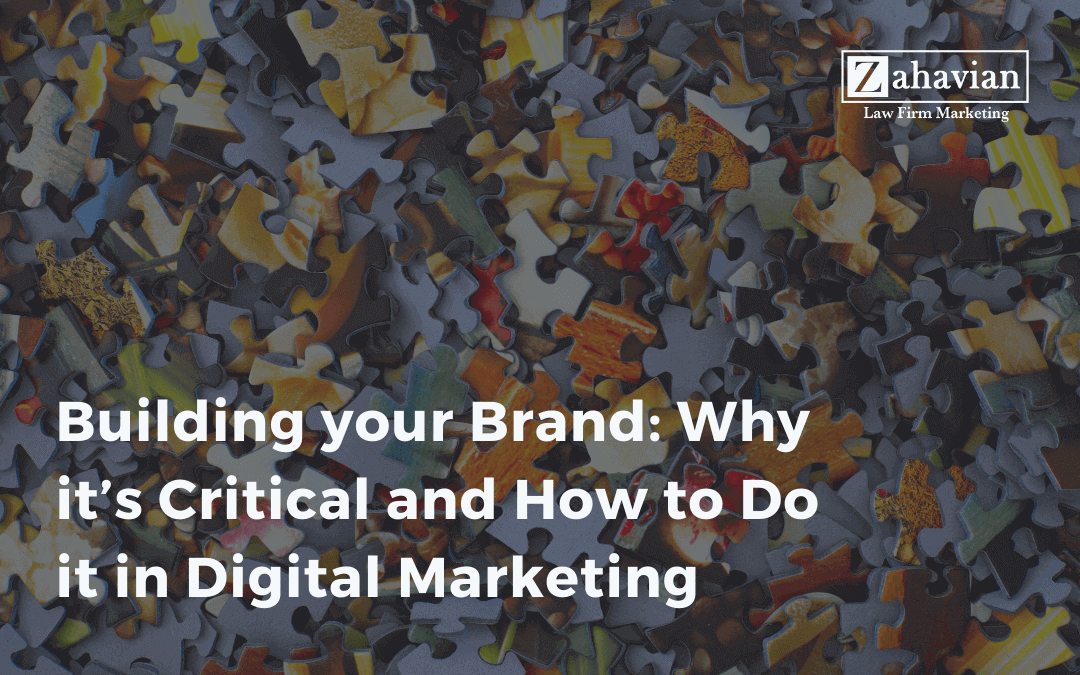We’ve all been told that building your brand is critical to the success of your long term marketing. Today’s post will go over the importance of building your brand’s image and how to do so effectively.
In the legal marketing space, we know there have been a handful of expensive, traditional print and broadcasting ads:
- Subway & Metros
- Full & Half-Page Ads in the phone book
- Buses and Bus-stops
- Billboards
- Radio
- Television
Suppose you put up a billboard or run another type of locally targeted advertisement in a highly populated area. The hopes is that you will see a healthy near term return on investment in the form of receiving more phone calls. They visit your site, search and google your name and you’re off to the races. But a secondary, but arguably more powerful affect is your overall brand awareness. Take the example of a billboard ad for a personal injury or car accident lawyer. Most people don’t get into car accidents. So the vast majority of people seeing these ads everyday do not constitute the target audience.
We’ve all heard about the rule of 7, where the consumer needs to see the brand / ad material 7 times before making a purchase. And to add to that, even when people are searching for a product, service or business, WordStream conducted a studied showing that the average conversion rate from AdWords campaigns across 16 industries was 3.75%. We’re thrown a lot of ads all day long, on tv, radio, google, facebook, the list does not end. Marketing and building a brand are not one and the same thing. Building a brand is big part of marketing, but it’s for longevity and takes a long time to develop. So when people are seeing your ads, whether its a billboard, tv ad or a facebook post, make sure your brand is visible to the point where if they see it a few more times, they’ll be able to recall it.
What you want to be doing is spending time in the places where people get to see your ads and brands again and again. We listed a bunch of old school methods for advertising. They’re still effective and people are still using those types of commercials and advertising, but ROIs are decreasing.
So what’s the point: GaryVee makes a great point about eyeballs and where people’s attention is shifting. He makes a great comment about the billboard ads and outdoor advertising. His point is think of how many pedestrians and passengers in vehicles are looking at their phones instead of outside. Everybody is on their social media instead! Facebook, Instagram and the lot. His point being is that is where you should be doing the brand building.
While you should be taking advantage of advertising on social media and popular websites including Facebook, Yelp, Google, YouTube, Instagram, SnapChat, LinkedIn and others. Keep this in mind: advertising and the popular mediums are always changing. It’s just the start of the internet and there’s going to be new players in the social media space for a long time coming. While the YouTubes and Facebooks of the world own a bunch of our attention in today’s age, it will continue evolving. The internet is a relatively new phenomena in human history. The mediums that attract the most eyeballs are going to change over time. Stay on top of the trends to get the most out of your marketing budget both for short-term generation and sales, but just as importantly for playing the long game of building your brand image.
1. Getting the Eyeballs: The Shift from Analog to Digital
People are spending much more time on their phones, tablets and computers. While we haven’t all cut the cable yet, viewership is declining, with 33 million US residents ditching their cable subscriptions in 2018.
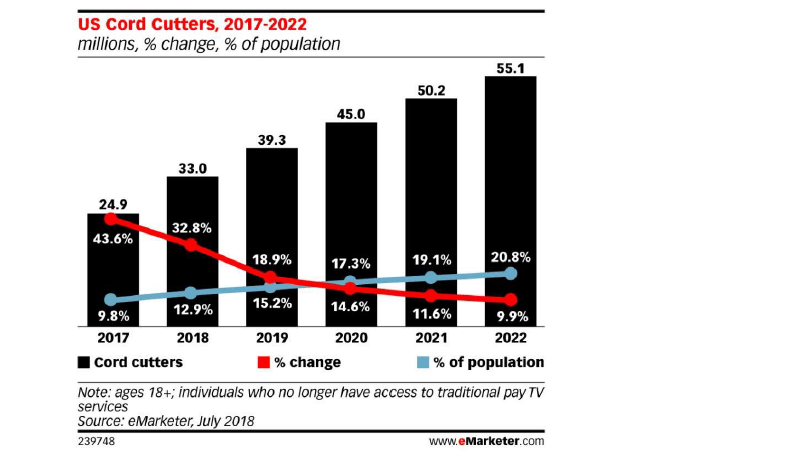
And this isn’t because people are watching less. People are switching to popular streaming services like Netflix, Hulu, YouTube and more. On-demand is rising and putting pressure on the traditional cable and satellite providers.
YouTube for instance, as of 2016, had over 167 million monthly active users in the US and Canada had around 22.8 million.
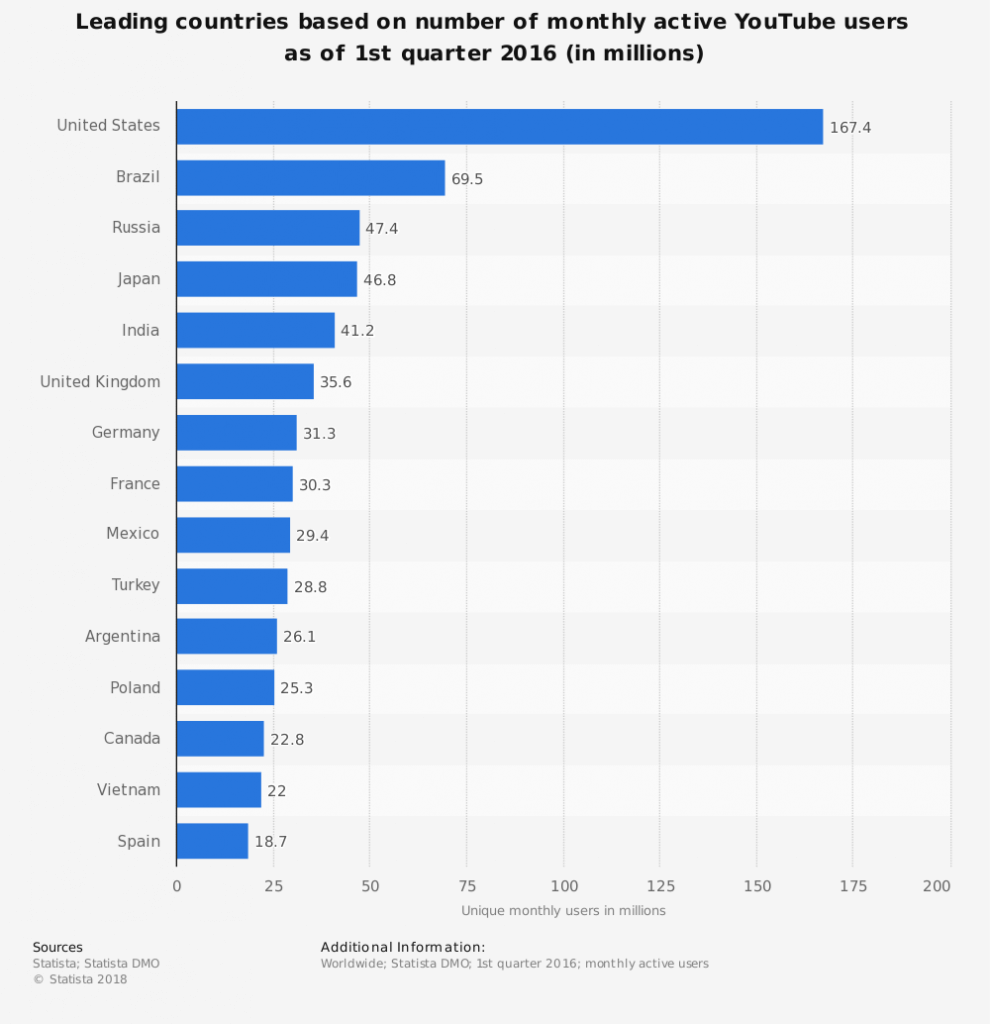
In 2017, Facebook hit 2 billion monthly active users worldwide.
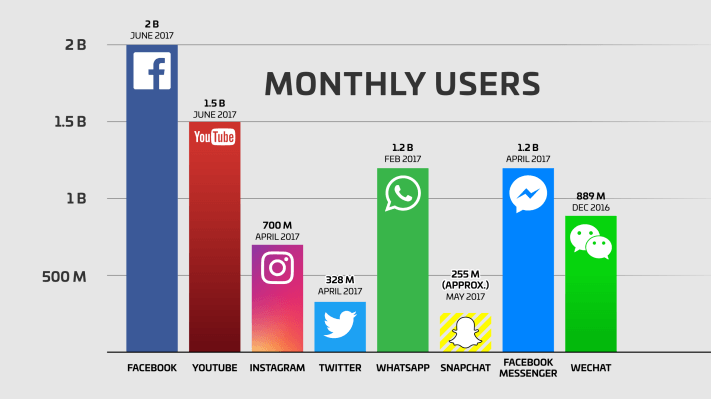
With everyone’s attention going straight into their palms, its becoming evidently clear to advertisers that the social networks and large websites that partner with the digital media giants are the places to find the most eyeballs.
Furthermore, it produces an even playing field for companies large and small looking to advertise on these platforms, as all advertisers have access to all of the same metrics and stats on their ad and campaigning performance.
2. Your Key Metrics for Measuring Success in Brand Development Marketing
Going back to the rule of 7, that number has likely risen since, given that we live in a world saturated with advertisements. So a question you must ask is, how much will it cost to deliver an impression? Setting aside how many times a user needs to have seen your ad, part of an effective approach marketing is determining how to serve a high number of impressions to your target audience without breaking the bank.
When dealing with a tv, radio stations or print and billboard advertisers, they are able to estimate how many impressions per month an ad will receive in certain locations. With digital advertising platforms like Facebook and Google, marketers have access to many metrics.
Key Marketing Metric Terms
CPM (Cost per Thousand)
Generally calculated as the cost per thousand impressions. This is a fairly standard metric used in print and tv advertising. You can also view this metric in Google and Facebook to compare across platforms and different audiences how much it costs to serve impressions to a given audience.
Reach
This is the number of unique users (people) that an ad has been shown to.
Impressions
An impression is every time your ad is displayed to a user. For instance, if 5 users are served the same ad 10 times, the 10 is the number of impressions, while the reach is 5.
Frequency
Frequency helps us calculate how our campaign is doing in terms of the rule of 7 mentioned above. This is calculated as an average. (# impressions) / (# users) = frequency. In the example above, an ad of 10 impressions across 5 unique users produces a frequency score of 2.
Some users may have seen the ad more frequently and some users less, but the frequency is calculated across the entire dataset. Not on an individual user basis.
So in order to deliver an ad on average 7 times to 5 users, we would need to serve 35 total impressions.
3. Staying ahead of the curve
Predict where things are going and head there 1st.
When Google first rolled out search advertising in 2000, one could pay $0.01 – $0.05 per click. Those days are long gone. Google Search Ads is in the neighbourhood of $100 CPC for lawyers. Facebook CPC is much cheaper, but increasing as we speak.
In terms of digital marketing platforms, there will be some attractive advantages to advertise on with the newcomers. Among them is low CPC as advertiser demand is low and has not driven up the CPC to saturated levels.
Depending on your key demographics, you may find a fairly strong match for an audience using your these newcomer networks and applications. Understanding who your audience is and their key demographics will you make smarter marketing decisions on what platforms to advertise on.
4. Be Patient, Don’t Be Afraid to Experiment and Measure Results
Try out new things if they’re cheap (whether because that’s due to low demand in buying ads on the platform or whether its just that much cheaper).
Calculate Result Metrics: ROI, LTV and MCAC
After running a campaign, try to accurately determine how many new leads and clients the campaigning led to. Go through and determine how much each client is worth (LTV, Lifetime Value). At the end of your campaign, you should also determine your MCAC (Marketing Customer Acquisition Cost). This is how much you spent over the entire campaign, divided by the number of clients you received. Lawyers for the most part, are in a high-margin business.
What percentage does the MCAC represent of the total client LTV? If it’s less than 10%, then you have room to experiment and run this campaign at scale. If it’s more than 10%, then you may be over-paying for your advertising channels or their are inefficiencies to work out in your marketing processes.
Measure These Metrics Like a Professional
You can measure these 3 metrics across all of your marketing expenses. Measure them for calendar years and over multiple years. Know exactly whether these stats are getting healthier or worse. Then you can compare year-over-year, but also compare which campaigns are producing better client LTVs, which ones have higher MCACs, etc.
Compare your campaign metrics with the year-to-date or previous year’s metrics. Is the campaign outperforming or underperforming the average?
Be Patient
We all know that change doesn’t happen overnight. Run a campaign for several months before making a decision on whether it was successful or not. This is because there is a process of developing momentum. In marketing, there is usually a latency between the time that someone sees your ad and when they need your services. This is a well-known concept in Awareness Campaigns, or Top of Mind Advertising. Your ads need time to build up through in your audience; being shown to the same audience multiple times to keep your brand top of mind when they need your legal services. Because of this momentum principle, it also means that you’re likely to experience continued results for some time after the marketing campaigns have ended.
5. Police Your Brand
I can’t emphasize this one enough. I have seen this happen to some great lawyers. They are incredible at what they do, but this is one of the areas where they really needed help in marketing.
They had ads on the back of the phone book, on television, outside of their office and many other print mediums. You know what each of these ads had in common? Unfortunately nothing.
Each time their logo and brand was used to create a new sign outside of one of their offices or for a new phone book ad, thumbnail and watermarks in the tv ads and YouTube videos, it was a different variation of the logo.
You can read more about how Facebook handles this type of issues in their Branding Guidelines. Here’s an example:
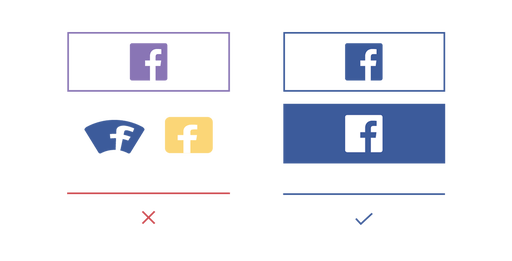
This is how you should be policing your brand. Before you ever approve a new advertisement or anything that has your firm’s brand attached to it, make sure that the advertising firm is using the exact copy of your logo. If they aren’t, make sure they make the necessary corrections.
Have your Designer Create a Branding Guide
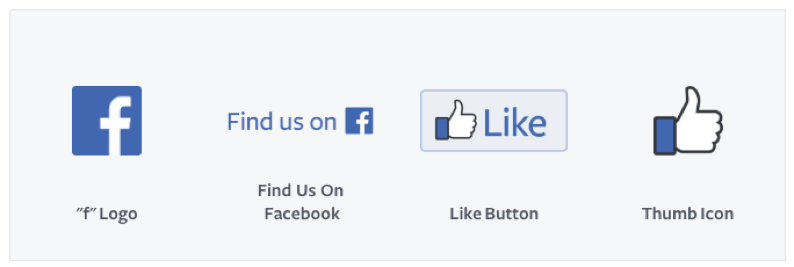
So that you make policing your brand easier on you and your advertising partners, have your graphic designer (or whomever created your logo and brand) to prepare a Branding Guide (also referred to as a branding asset guide). A good branding guide will contain all the variations of your logo and brand. You may have variations of your logo and brand, different slogans or tag-lines used with them.
When your advertising partners deliver a draft of the ad they’re going to run for you, all you have to do is compare the version of your logo they have used in the advertisement and confirm that it exactly matches one of the acceptable logos documented in your Branding Guide.
6. Your Brand will Evolve
Times change and companies do with them. Your brand won’t change every year and nor should it always go through a drastic change. Sometimes companies will completely pivot their brand and image, but most will preserve the overall company brand and keep it updated – changing with the times.
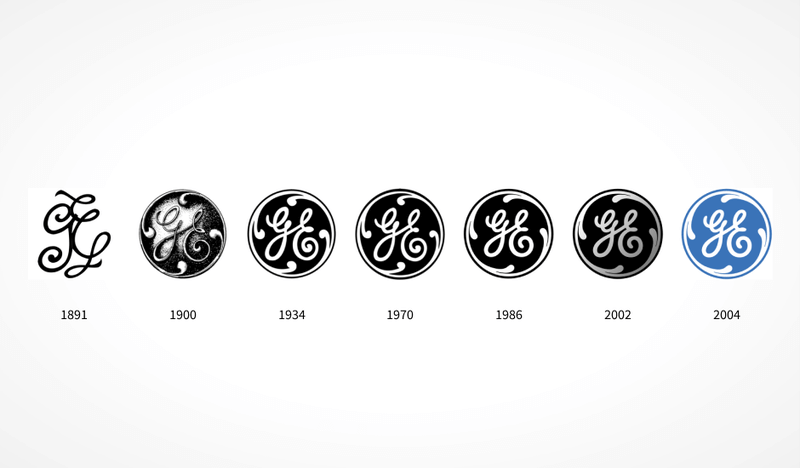
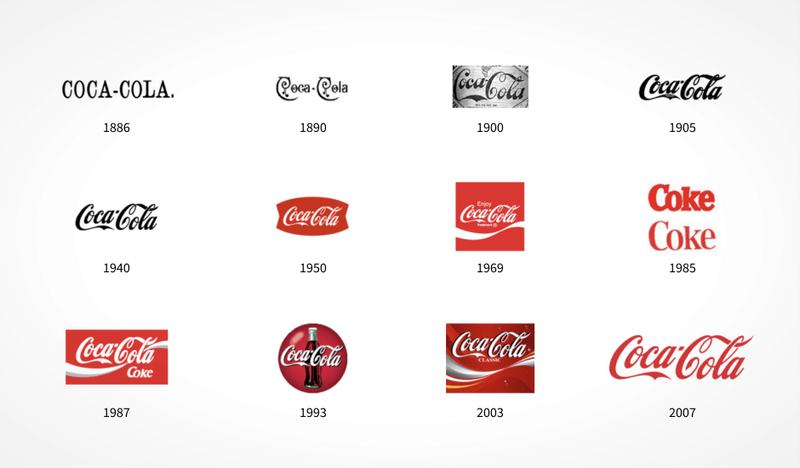
Notice how both brands haven’t changed so much as they have been updated and adapted with the times. There are other examples of companies that have changed more dramatically, however, the brand recognition is so important to these companies that they don’t mess too much when they have a good thing going for them.
It’s Not Too Late to Pivot Your Brand
Looking at successful companies like GE and Coca-Cola sticking to their brand over very long periods of time, at first may deter you from wanting to switch your brand. However, even the largest companies in the world know when it’s time to pivot their company image for the better.

There’s not better example of this than Amazon. So if you or other business partners express the need to update or change your company’s brand entirely, there is no harm in exploring new concepts.
You can work with graphic designers and branding experts to develop new concepts. You can pay for the work, but nothing is final until you actually sign off on it.

